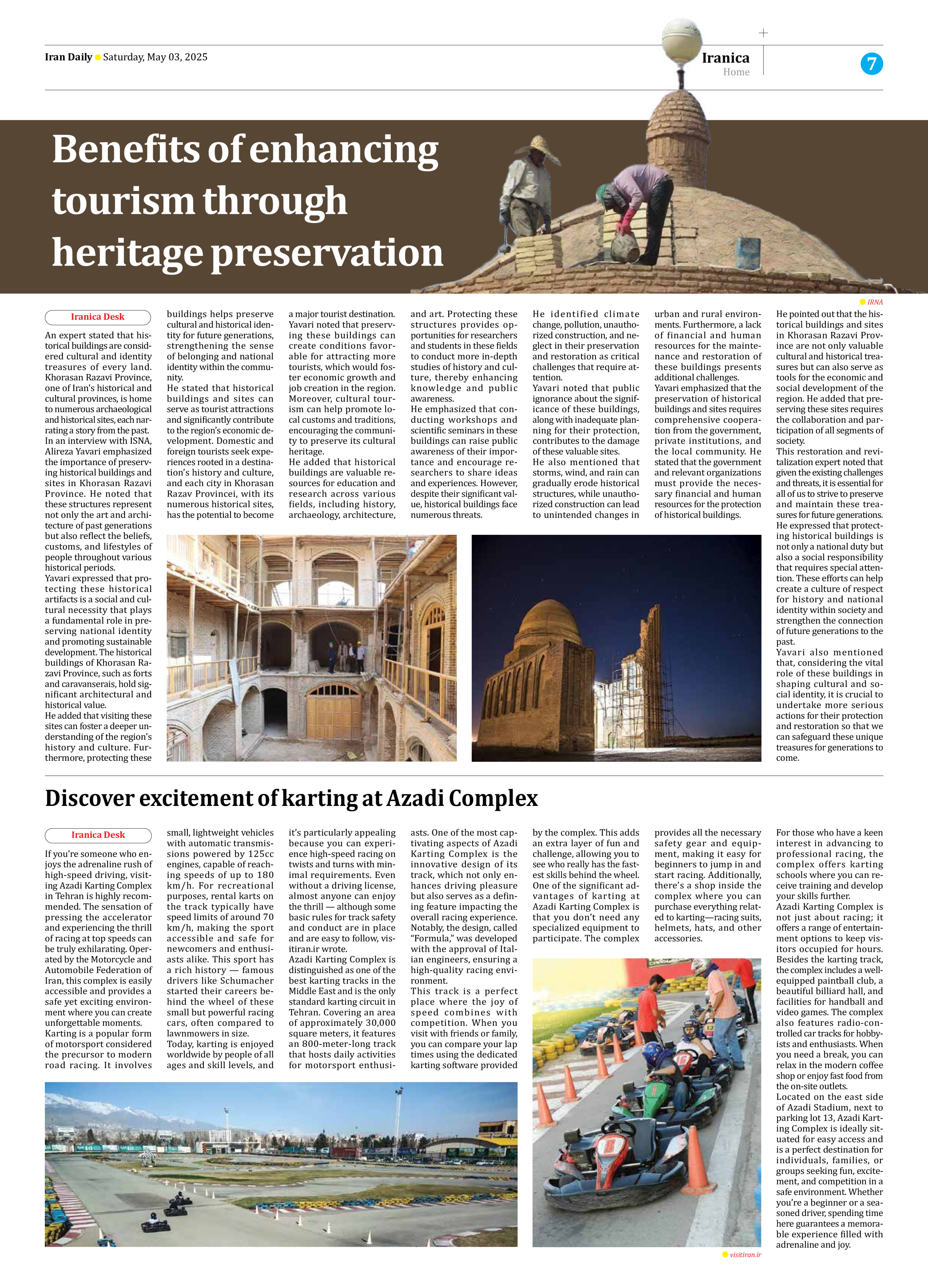
Benefits of enhancing tourism through heritage preservation
An expert stated that historical buildings are considered cultural and identity treasures of every land. Khorasan Razavi Province, one of Iran’s historical and cultural provinces, is home to numerous archaeological and historical sites, each narrating a story from the past.
In an interview with ISNA, Alireza Yavari emphasized the importance of preserving historical buildings and sites in Khorasan Razavi Province. He noted that these structures represent not only the art and architecture of past generations but also reflect the beliefs, customs, and lifestyles of people throughout various historical periods.
Yavari expressed that protecting these historical artifacts is a social and cultural necessity that plays a fundamental role in preserving national identity and promoting sustainable development. The historical buildings of Khorasan Razavi Province, such as forts and caravanserais, hold significant architectural and historical value.
He added that visiting these sites can foster a deeper understanding of the region’s history and culture. Furthermore, protecting these buildings helps preserve cultural and historical identity for future generations, strengthening the sense of belonging and national identity within the community.
He stated that historical buildings and sites can serve as tourist attractions and significantly contribute to the region’s economic development. Domestic and foreign tourists seek experiences rooted in a destination’s history and culture, and each city in Khorasan Razav Provincei, with its numerous historical sites, has the potential to become a major tourist destination.
Yavari noted that preserving these buildings can create conditions favorable for attracting more tourists, which would foster economic growth and job creation in the region. Moreover, cultural tourism can help promote local customs and traditions, encouraging the community to preserve its cultural heritage.
He added that historical buildings are valuable resources for education and research across various fields, including history, archaeology, architecture, and art. Protecting these structures provides opportunities for researchers and students in these fields to conduct more in-depth studies of history and culture, thereby enhancing knowledge and public awareness.
He emphasized that conducting workshops and scientific seminars in these buildings can raise public awareness of their importance and encourage researchers to share ideas and experiences. However, despite their significant value, historical buildings face numerous threats.
He identified climate change, pollution, unauthorized construction, and neglect in their preservation and restoration as critical challenges that require attention.
Yavari noted that public ignorance about the significance of these buildings, along with inadequate planning for their protection, contributes to the damage of these valuable sites.
He also mentioned that storms, wind, and rain can gradually erode historical structures, while unauthorized construction can lead to unintended changes in urban and rural environments. Furthermore, a lack of financial and human resources for the maintenance and restoration of these buildings presents additional challenges.
Yavari emphasized that the preservation of historical buildings and sites requires comprehensive cooperation from the government, private institutions, and the local community. He stated that the government and relevant organizations must provide the necessary financial and human resources for the protection of historical buildings.
He pointed out that the historical buildings and sites in Khorasan Razavi Province are not only valuable cultural and historical treasures but can also serve as tools for the economic and social development of the region. He added that preserving these sites requires the collaboration and participation of all segments of society.
This restoration and revitalization expert noted that given the existing challenges and threats, it is essential for all of us to strive to preserve and maintain these treasures for future generations.
He expressed that protecting historical buildings is not only a national duty but also a social responsibility that requires special attention. These efforts can help create a culture of respect for history and national identity within society and strengthen the connection of future generations to the past.
Yavari also mentioned that, considering the vital role of these buildings in shaping cultural and social identity, it is crucial to undertake more serious actions for their protection and restoration so that we can safeguard these unique treasures for generations to come.







